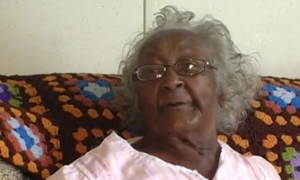Health
Fighting Sickle Cell: A Mother’s Mission
 By Shera Dalin.
By Shera Dalin.
Just days before he was set to walk the graduation line and receive his MBA diploma, 23-year-old Aaron Ardoin had to have surgery for complications from a disease he had successfully managed all his life.
But this time, the disease won. Just as he was preparing to start his adult life, Aaron died of complications from the surgery caused by sickle cell disease. Aaron’s mother, Priscilla, has since committed her life to spreading the word about the risks of the genetic disorder and working to find treatments and a cure.
“Sickle cell was not who Aaron was; it was something that he had,” Priscilla says. “Awareness of the disease is so important so that people who have it can be all that they can.”
Traditionally considered a disease that only afflicted African-Americans, sickle cell has morphed into an ailment that is crossing racial boundaries to sicken 100,000 people a year. While one in 12 African Americans is a carrier of the genetic trait, more people of all races are developing the blood disorder because of the nation’s increasing diversity.
“Sickle cell is a concern for all our communities,” says Vincent Edwards, executive director, biomedical services and diversity outreach for the American Red Cross.
One in 1,000 Hispanics are carriers and 1,000 babies each year are born with the disorder. Each one has the potential to pass that trait on to his or her children, who will increase the number of sufferers yet again, if their partner is also a carrier.
The problem, Edwards says, is that many people, particularly African Americans, believe that sickle cell has been cured. It hasn’t.
Without symptoms, the only way to know if you have the disease is to have a simple blood test called hemoglobin electrophoresis, which measures the amount of the abnormal sickle hemoglobin.
Couples can have genetic tests done before they have children to determine if they are carriers. They can then make educated decisions about family planning.
Priscilla Ardoin says she wishes she had known before she became pregnant that her husband was a carrier and that she suffered from the genetic blood disorder thalassemia minor, which put their children at greater risk for sickle cell. At the time, she was undergoing fertility treatments and her doctor failed to question whether her husband might have the trait.
“We need more information in the African-American community,” she says. “We need more resources; doctors, health professionals and researchers working to prevent it; and understanding the disease from a professional perspective.”
With that aim, Priscilla Ardoin founded the Aaron Ardoin Foundation Supporting Sickle Cell Research & Education in 2005, just a year after Aaron died. The foundation supports research, education and families coping with the disease.
The Red Cross is also working to educate Americans about the risks of sickle cell and to encourage them to become blood donors, which can help detect the disease. Blood donations are also needed, particularly from African Americans, so that better donor-recipient matches can be made and sickle cell sufferers can receive pain-reducing transfusions, Edwards says.
“But how do we get a community that by tradition has not been instilled to be blood donors?” he asks. “If we are part of the community, the trust factor will be built.”
The Red Cross is working closely with faith-based organizations to demonstrate that the agency can be a trusted partner and that becoming a donor can help other members of the same community. The agency is also trying to make minorities aware of the services it provides to them outside of blood supplies: babysitting certification classes, opportunities for youth to become disaster preparedness volunteers, and more.
The group is also working nationally to encourage minorities to volunteer at nonprofits in their own communities–not just the Red Cross.
“We have to do this,” Edwards says. “If we don’t, the need will still be there, and it’s only growing.”
Sickle Cell Basics
Sickle cell disease is an inherited disorder that affects red blood cells, causing anemia, pain organ damage, and stroke.
It affects people of all races.Both parents must be carriers of the disease for their child to become afflicted.
There is no cure…yet.
Genetic research is ongoing to find a cure.
Treatment can include:
Opioid pain medications such as morphine
Anti-inflammatory medications such as ibuprofen
Antibiotics for infection
Oxygen
Intravenous or oral fluids
Blood transfusions
More information is available at sicklecelldisease.org, aaronardoinfoundation.org and redcross.org
By Shera Dalin, Village Contributor

-

 Featured10 months ago
Featured10 months agoCalifornia Is the First State to Create A Public Alert for Missing Black Youth
-

 Featured9 months ago
Featured9 months agoAfrican American Leaders Stay the Course Amid Calls for President Biden To Bow Out of Race
-

 Featured10 months ago
Featured10 months agoThe Debate Fallout Lands on Both Candidates
-

 Featured9 months ago
Featured9 months agoPresident Joe Biden Decides to Withdraw from the Presidential Race
-

 Featured9 months ago
Featured9 months agoIn One of His Final Speeches as President, Biden Says It’s Time for ‘Fresh Voices’
-

 Featured9 months ago
Featured9 months agoPresident Joe Biden Describes Shooting of Donald Trump As ‘Sick’





